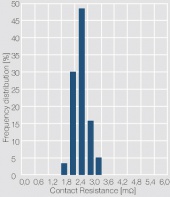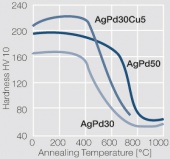Copper-Nickel Alloys
Copper and nickel are in their solid and liquid phase completely soluble in each other. Because of their very low electrical conductivity, they are mainly used as resistance alloys. The work hardening and softening behavior of CuNi alloys and CuNi9Sn2 are shown in (Figs. 3 – 7). Coppernickel alloys exhibit high corrosion resistance, good weldabilty and the suitability for cladding to other materials. Because of...


